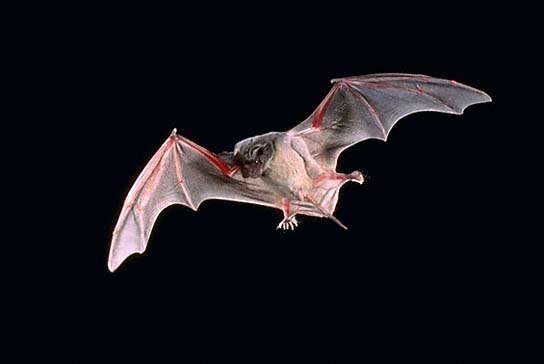
Bat
Like many animals, bats have learned to adapt to a wide variety of environments and habitats. The only terrain they don’t inhabit is the Arctic. There are 39 species of bats in North America, all of which are nocturnal. Some bats are insectivores, others eat things like fruit and pollen. Bats are associated with many different cultures and mean different things to different people.
The Mayans had a bat god called Camazote, who was said to have tested human souls with a large sword. This is slightly negative, since the bat is associated with violence. In Biblical tradition, bats were believed to be messengers of Satan. The Puritans believed that if a bat flew close to someone, somebody was trying to bewitch them. The Chinese, however, view the bat as a symbol of happiness.
They are amazing creatures. Bats can fly in huge hoards while never hitting each other because of echo-location. This ability is linked with the gift of clairaudience, which awakens the ability to hear spirits in some beliefs. Because of their echo-location and maneuvering in the dark, bats represent the perception of things that others cannot see.
To the Indian tribes of the northwestern United States, bats are symbols of diligence; while in the Great Plains, they imparted wisdom on their people. In the southwest and Mexico, they are representative of death and rebirth, because they go underground in the early morning, and then appear again each night in a noisy hoard. So they are reborn every night, flooding out from their caves.
Bats often represent death in the sense of letting go of the old, and bringing in the new. They are symbols of transition, of initiation, and the start of a new beginning.
Information from Ted Andrews's Animal-Speak, Jessica Dawn Palmer's Animal Wisdom, and Steven D. Farmer's Power Animals.

